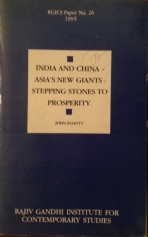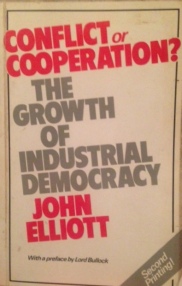The picture of an auto-rickshaw – an urban elephant – has been cropped from a larger painting by Feroz Khan, a young artist based in Delhi. _________________________________________________
I’m a British journalist, now London based, having been in New Delhi for more than 25 years till mid-2018 – writing initially in the 1980s for the Financial Times and, from the mid-1990s, mostly for Fortune magazine (till 2009), The Economist (2013), and earlier the New Statesman.
My articles now appear on the Hong Kong-based news website Asia Sentinel and sometimes on India’s Wire.in news website
Riding the Elephant began in April 2007 as a twice-weekly column on Fortune magazine’s website – http://money.cnn.com/magazines/fortune/ . The aim was to expand the coverage of India in the run-up to Fortune’s big Global Forum conference in Delhi in October 2007. After the Forum, I continued the posts till the end of July 2008 when, following budget cuts at Fortune, the blog began its independent existence here. Posts then appeared on the FT.com India web page, and later on The Independent newspaper and Newsweek magazine websites.
I mainly write about India, and sometimes its neighbours, focussing on issues that seem to me to be interesting and important – hoping that they stimulate interest and comment. I also write on the Indian modern art market and, occasionally, on events in the UK.
_________________________________________
 The “Modi” paperback edition of my prize-winning book, IMPLOSION: India’s Tryst with Reality, was published by Harper Collins India in 2019.
The “Modi” paperback edition of my prize-winning book, IMPLOSION: India’s Tryst with Reality, was published by Harper Collins India in 2019.
It is available in India’s bookshops, and on http://amzn.to/2gwrfjb along with an e-book. Elsewhere an e-book is available on Amazon.com and Amazon.co.uk.
When the original hardback edition was published early in 2014, IMPLOSION was recognised as a hard-hitting analysis of how and why India punches below its weight, failing to achieve what it could and should be doing.
A 2015 paperback edition brought the story up to date, looking at the election of Narendra Modi as prime minister, his political past, and his new challenges.
The 2019 edition updates key points throughout the book. and has a new preface and five new chapters that examine Modi’s record and his impact on the country.
The issues raised in IMPLOSION amount to an Agenda for Change that Narendra Modi faced in 2014, and that whoever is elected in May 2019 needs to take forward.
The book looks at why and how India has under-performed, and how it doesn’t work because of the ‘quick fix’ attitude known as jugaad and laissez faire’s chalta hai that together have eaten into the country’s social and political fabric.
Successive chapters examine how corruption has affected all aspects of life. The decades of rule by the Nehru-Gandhi dynasty are questioned and it is suggested that democracy provides a smokescreen for much that is wrong. The book explores the impact of economic liberalisation, traces the build-up of social unrest over corruption, rape and exploitation of land, and reflects on the limitations of what in the past has been a hesitant foreign policy and depleted defence forces. Along the way, the book uncovers a secret ‘M document’ written in 1990 that mapped out the 1991 economic reforms, and reveals how I was an unwitting spectator at a Pakistan briefing meeting for the 1991 Kargil war.
There’s much more, including the hopes of a new young generation and growing public demand for changes in the way the country is run.
Other career details:
Financial Times’ first South Asia correspondent (1983-88), following several years in London as labour editor and industrial editor. In 1988 moved to Hong Kong as the FT’s correspondent for the territory, southern China and Taiwan.
In 1991, left the FT and spent just over three years in the Hong Kong Government as public affairs adviser to the Chief Secretary (Sir David Ford, then Mrs Anson Chan), then returned to India in 1995.
President of the Foreign Correspondents’ Club of South Asia (2007-09) and of the International Association of Press Clubs (2008-09).
Other Publications:

.
“Foreign Correspondent – 50 years of Reporting South Asia”, Editor with Bernard Imhasley, Simon Denyer. Penguin India. Original hardback, April 2008. Updated paperback Nov 2009 https://www.goodreads.com/book/show/6958063-foreign-correspondent
 “India and China – Asia’s New Giants: Stepping Stones to Prosperity”, Rajiv Gandhi Institute of Contemporary Studies, Delhi 1995. http://www.rgics.org/
“India and China – Asia’s New Giants: Stepping Stones to Prosperity”, Rajiv Gandhi Institute of Contemporary Studies, Delhi 1995. http://www.rgics.org/
“Conflict or Co-operation? – The Growth of Industrial Democracy”, Kogan Page London, hardback 1977, updatedpaperback 1983. http://www.abebooks.com/9780850381061/Conflict-Co-Operation-Growth-Industrial-Democracy-0850381061/plp
_____________________________________________________
TO RECEIVE E-MAIL ALERTS ON NEW POSTS – send your e-mail address to jefortune@gmail.com . Please post comments by clicking Comment at the end of a post. I don’t run those that are offensive or come from false email addresses. If it is offensive, I invite a re-write. If an address looks false, I message for verification, and reject the comment if I get no answer or a bounceback.
____________________________________________________________________


Nice blog.Thanks for sharing.Keep sharing more
By: prosper on June 1, 2017
at 6:26 pm
Well researched, well written book. India needs to take heed if it is to become a truly world class country. Too much jugaad and too much chalta hai is the reason for the chaotic mess that is India.
By: Rajat Bhatia on April 27, 2017
at 9:58 pm
John,
I just read three chapters of your book after buying it yesterday from Lahore Literature Festival and found your range and depth commendable. I think for South Asian countries, broad books work best given our complexity, chaos and yes amazing potential. Also liked the way you conducted today’s session featuring two ex-foreign ministers ( Khar and Kasuri) as well as great Shekhar Gupta and Najam Sehti. A great discussion. Keep coming back.
Javed Ahmed Malik, Lahore
By: Javed Ahmed Malik on February 22, 2015
at 10:13 pm
Respected Mr. Elliott,
By now you must have forgotten my question to you in the programme of your conversation with Mr Mark Tully on your book ‘Implosion: India’s Tryst with Reality” in the recently held Guwahati Literary Festival in Assam. In my question I referred to the travelogues penned by V.S. Naipaul on India where he failed to delve deep into many layers of India. At that time I didn’t read your book. I admitted that then.
I have just finished reading your book. You have tried to give a complete vivid picture of contemporary India deftly touching upon the two stereotypical aspects associated with India: jugaad and chalta hai. The title apparently takes us back to Nehru’s famous speech. Though on the surface level your approach seems to be objective, there runs a tone of sympathy and, sporadically, a zeal for reformation. To me it is a must read book. Congratulations!
Dr. Nipam Kumar Saikia
Address: Village: Nabapur, P. O.: Biswanath Chariali. Dist.: Sonitpur, PIN: 784176, Assam, India. Mobile: 09864609048 email: professorsaikia@gmail.com
By: Dr. Nipam Kumar Saikia on January 15, 2015
at 4:48 pm
Dear John,
I have just finished reading Implosion and I must Congratulate you on your this masterly work. I have no doubt that you must have put in lots of hours to write this book but your effort was wellworth it.
You had covered a very vast canvas and time frame and have been aptly able to capture the ethos of Indian life and pality. This is a rare combination and I must compliment you. Most Works cover the political environment or social milieu, you have very aptly covered both. Another great point is that you have not been judgmental. Your description Judgard and chalta hai is masterly.
With the new Govt. coming in, you may have to revist your conclusions. But these are very early days yet. Hype is evident reality will take time to manifest.
With warm regards,
(Amarjit Singh)
amarjitsingh.ief@gmail.com
By: Mr. Amarjit Singh on September 10, 2014
at 1:29 pm